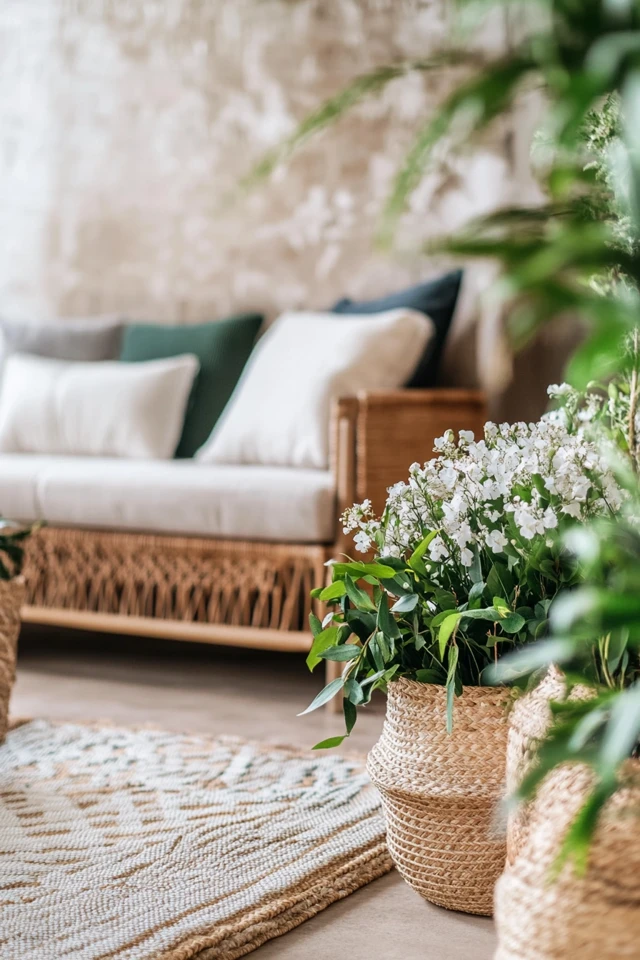Creating a bohemian meditation space is more than just a design project—it’s about crafting a sanctuary where you can recharge, reflect, and reconnect with yourself. Meditation spaces infused with boho aesthetics strike a balance between peace and creativity, blending natural materials, soothing colors, and personal touches to create a harmonious retreat. I remember transforming a small sunroom into a boho meditation space for a client who wanted a calming escape from her busy city life. With layered rugs, soft lighting, and thoughtfully placed decor, the room became her favorite place to unwind and recharge.
Whether you’re a seasoned meditator or just beginning your mindfulness journey, a serene boho-inspired meditation space can help you feel grounded and inspired. This guide will walk you through every detail of designing your own bohemian oasis, from choosing the perfect corner to layering decor for comfort and style.
1. Choose the Perfect Spot for Your Meditation Space
Why Location Matters
The right location can set the tone for your meditation practice. Ideally, choose a spot that feels quiet, private, and free from distractions.
Tips for Finding Your Space
- Natural Light: Select a spot near a window to enjoy the calming effects of sunlight or a view of nature.
- Privacy: Use a corner of your bedroom, living room, or even a closet nook where you can disconnect.
- Versatility: If space is limited, create a portable setup with items you can easily store when not in use.
For one client, we turned a small corner of her bedroom into a serene retreat by placing a meditation mat near a window with sheer curtains. The natural light created a peaceful ambiance perfect for quiet reflection.
2. Set the Mood with a Calming Color Palette
Why Colors Are Important
Colors influence our emotions and energy levels. A serene meditation space should feature soft, earthy tones or muted shades to promote relaxation and focus.
Bohemian Color Palette Ideas
- Neutral Tones: Use beige, cream, or taupe as a calming base.
- Earthy Hues: Incorporate sage green, terracotta, or dusty pink for a grounding feel.
- Accents: Add pops of deep indigo, mustard, or rust for warmth and personality.
For a boho meditation space, I once painted the walls in a soft, warm beige and added accent pillows in muted terracotta and olive green. The color palette felt soothing and cohesive.
3. Layer Textures for Comfort and Visual Interest
Why Texture Matters
Bohemian design thrives on layers of texture, which add depth and create a cozy, inviting atmosphere.
How to Layer Textures
- Rugs: Start with a large area rug as the foundation, then layer a smaller, plush rug or sheepskin for extra softness.
- Cushions and Pillows: Use a mix of materials like linen, velvet, and woven cotton for floor cushions and back support.
- Throws and Blankets: Add lightweight throws or macramé blankets for warmth and comfort.
In a recent project, I layered a jute rug with a soft Moroccan-style runner and added oversized knit floor cushions. The tactile contrast made the space feel both cozy and visually dynamic.
4. Incorporate Natural Elements for a Grounding Effect
Why Nature Complements Meditation
Natural materials and greenery connect you to the earth, enhancing the calming energy of your meditation space.
Ideas for Adding Natural Elements
- Plants: Include low-maintenance greenery like snake plants, pothos, or peace lilies.
- Wood Accents: Use wooden furniture, bowls, or trays for an organic touch.
- Crystals: Display calming stones like amethyst, rose quartz, or clear quartz for added energy.
For a client’s meditation room, we placed a large monstera plant in the corner and used a reclaimed wood bench as a meditation altar. These natural touches brought a sense of grounding to the space.
5. Create a Comfortable Seating Area
Why Comfort Is Essential
Meditation is all about finding stillness, so your seating needs to be both supportive and cozy.
Seating Options for Your Meditation Space
- Meditation Cushions: Use zabutons (floor mats) or zafus (round cushions) for traditional meditation seating.
- Floor Chairs: Opt for floor chairs with back support if you prefer more structure.
- Poufs or Ottomans: These versatile seating options are perfect for both meditating and lounging.
In one project, we styled a client’s meditation area with a cotton zafu and a tufted floor cushion in neutral tones. The setup was simple yet perfectly suited to her practice.
6. Add Soft, Layered Lighting
Why Lighting Sets the Mood
Soft, adjustable lighting creates a calming environment for meditation, especially during evening or early morning sessions.
Lighting Tips for Your Space
- Candles: Use real or flameless candles for a flickering, peaceful glow.
- String Lights: Hang warm fairy lights around your space for a whimsical, bohemian touch.
- Lamps: Choose lamps with fabric or rattan shades to diffuse the light.
For an evening meditation room, I placed a salt lamp on a low shelf and draped string lights around a canopy. The gentle glow made the space feel magical and serene.
7. Personalize with Meaningful Decor
Why Personal Touches Enhance Serenity
Adding items with personal or spiritual significance creates a deeper connection to your meditation space.
Decor Ideas for Personalization
- Altar: Create a small altar with candles, incense, or spiritual symbols.
- Wall Art: Use macramé hangings, framed affirmations, or prints of calming landscapes.
- Books: Display inspirational or spiritual books on a nearby shelf for post-meditation reading.
In a client’s boho meditation space, we added a small brass Buddha statue and a framed quote about mindfulness. These personal touches made the space feel uniquely hers.
8. Use Scents to Enhance Relaxation
Why Aromas Are Powerful
Scents can help you unwind and focus, making aromatherapy a natural addition to your meditation routine.
Ways to Incorporate Scents
- Essential Oils: Use a diffuser with oils like lavender, eucalyptus, or sandalwood.
- Incense: Burn sticks or cones in scents like palo santo or patchouli for a boho vibe.
- Candles: Choose scented candles that complement the mood you want to create.
For one project, we used an essential oil diffuser with a blend of lavender and cedarwood. The subtle aroma elevated the entire meditation experience.
9. Use Sound for a Multisensory Experience
Why Sound Enhances Meditation
Soothing sounds can help deepen your meditation practice, mask outside noise, and create a tranquil atmosphere.
Sound Ideas for Your Meditation Space
- Sound Bowls: Use Tibetan or crystal singing bowls to create calming vibrations.
- Speakers: Play ambient music, nature sounds, or guided meditations.
- Wind Chimes: Hang chimes near a window for a gentle, melodic backdrop.
In one design, I added a small Bluetooth speaker to play rainforest sounds during meditation. The natural audio enhanced the relaxing atmosphere of the space.
10. Keep the Space Clutter-Free
Why Minimalism Promotes Relaxation
A clutter-free environment helps you focus and creates a sense of openness and calm.
Tips for Decluttering
- Storage Baskets: Use woven baskets or fabric bins to store blankets, cushions, or meditation accessories.
- Hidden Storage: Incorporate furniture with built-in storage, like benches or ottomans.
- Daily Reset: Spend a few minutes tidying the space after each session to maintain its serene energy.
For a small boho meditation corner, I used a rattan basket to neatly store yoga mats and extra cushions. The tidy setup kept the space feeling peaceful and inviting.
Picture Gallery
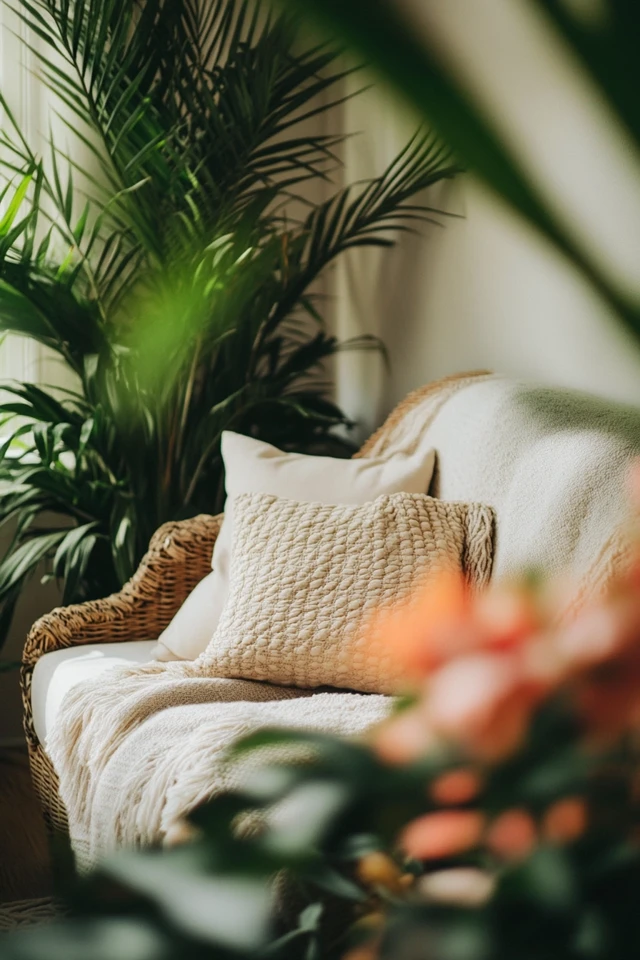
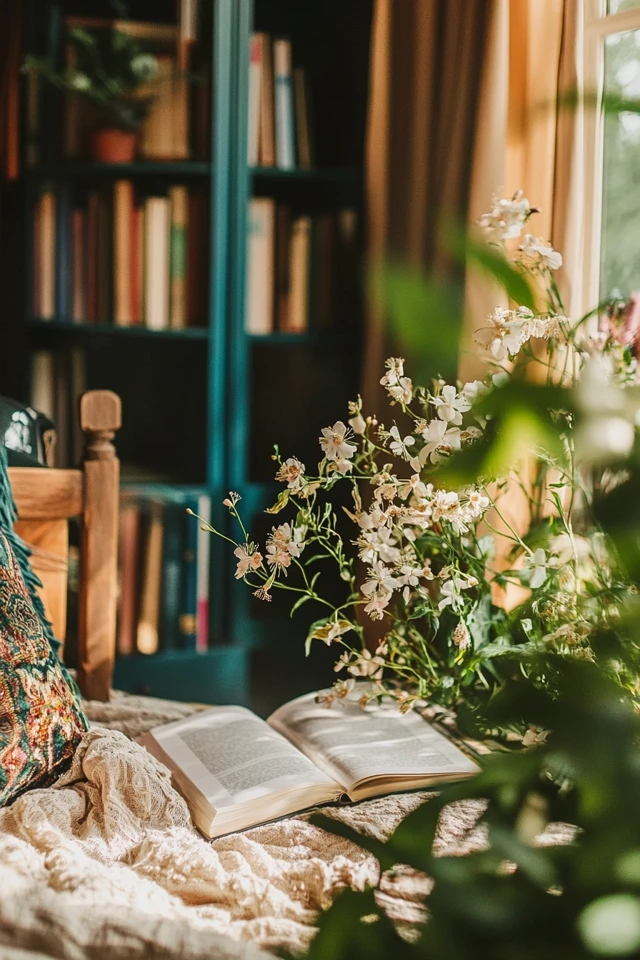
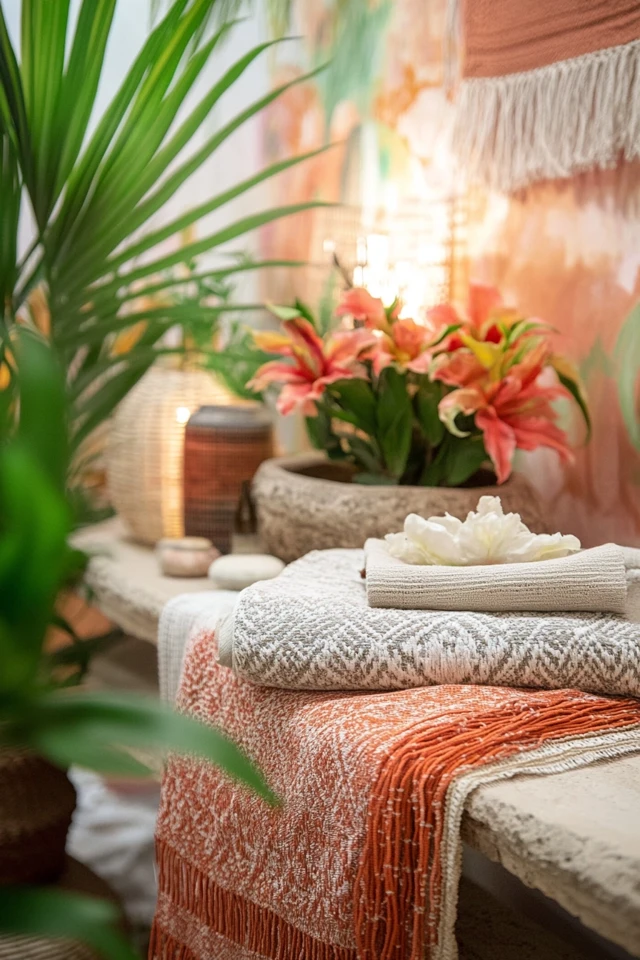

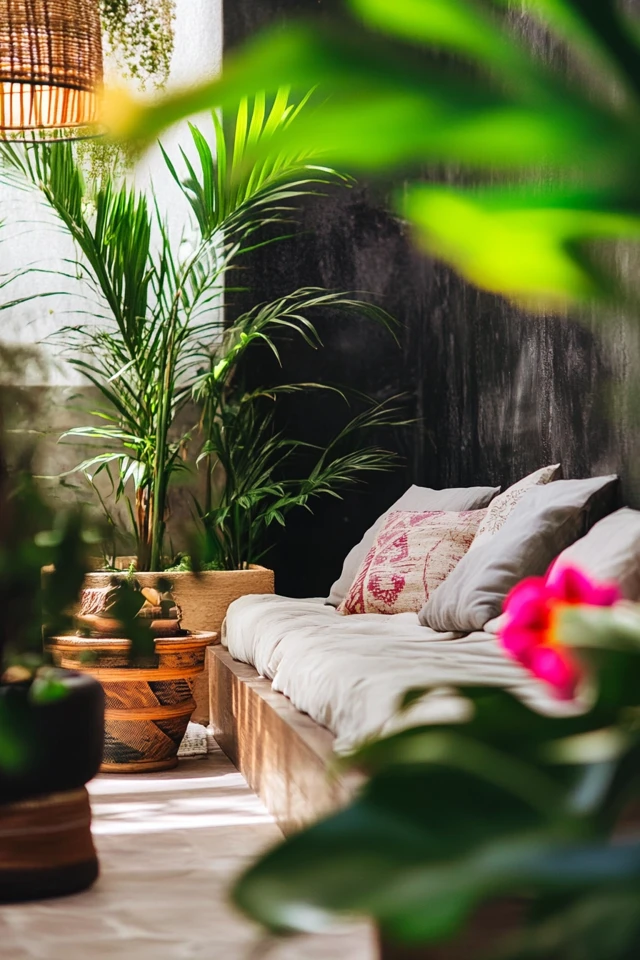
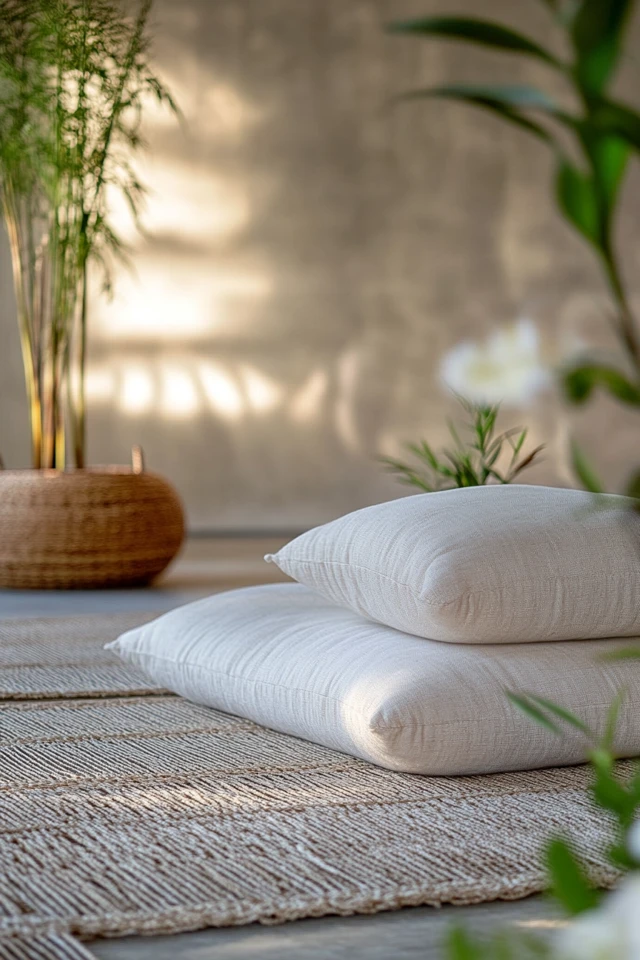
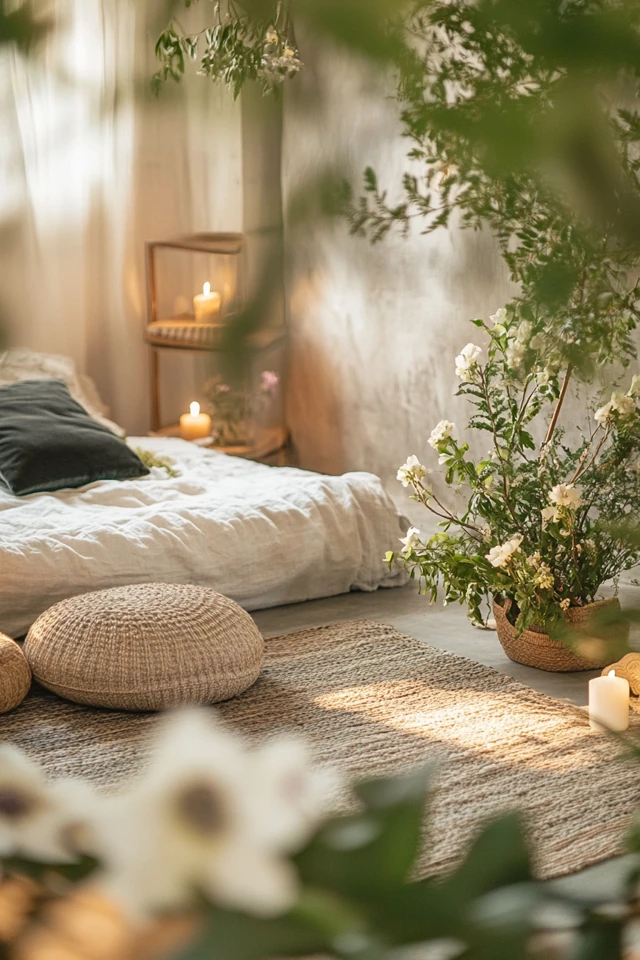
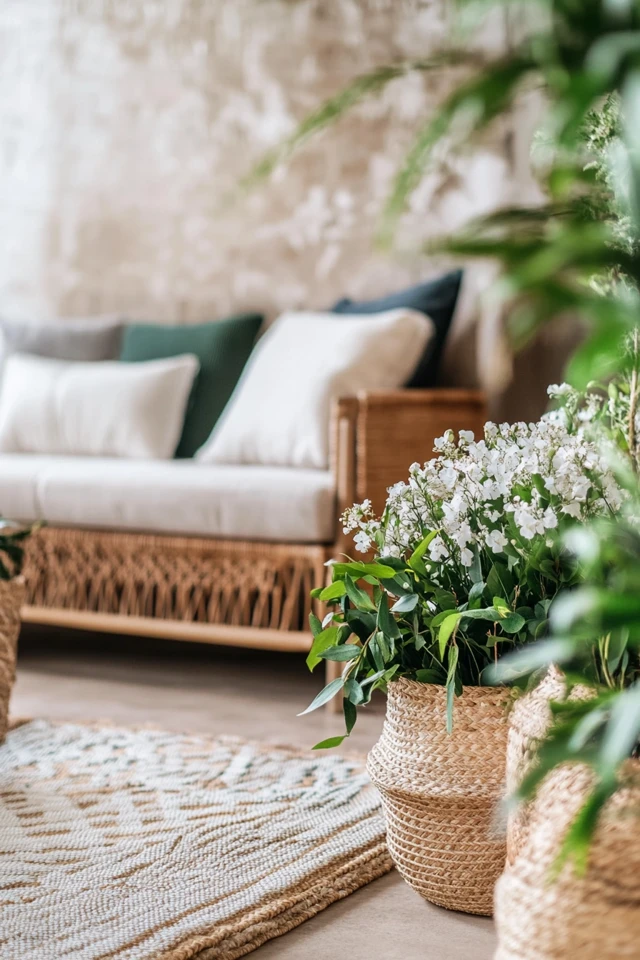
Conclusion
Designing a serene bohemian meditation space is about more than aesthetics—it’s about creating an environment that supports your mindfulness practice and nurtures your well-being. By combining soft textures, natural elements, and personal touches, you can craft a space that feels deeply calming and uniquely yours.
Over the years, I’ve seen how even the smallest meditation corners can transform lives. Whether it’s a layered rug under a window, a few candles on a low table, or a lush plant by your side, these thoughtful details create a space where you can reconnect with yourself and find inner peace.
So take your time, experiment with what feels right, and let your boho meditation space become a sanctuary for your mind, body, and soul.
FAQ
How much space do I need for a meditation area?
You only need a small corner or a few square feet—just enough to comfortably sit or lay out a mat.
What colors work best for a boho meditation space?
Earthy tones like sage green, terracotta, and beige are ideal, but you can also incorporate soft pastels or muted jewel tones.
How can I make my meditation space portable?
Use lightweight, stackable items like foldable cushions, portable diffusers, and compact storage baskets.
What’s the best way to add boho decor without overcrowding?
Focus on a few key elements, like a macramé wall hanging or a small altar, and keep the rest of the space simple and clutter-free.
Can I use a boho meditation space for yoga too?
Absolutely! Simply add a yoga mat and ensure there’s enough room for movement. The soft lighting and decor will enhance your practice.

